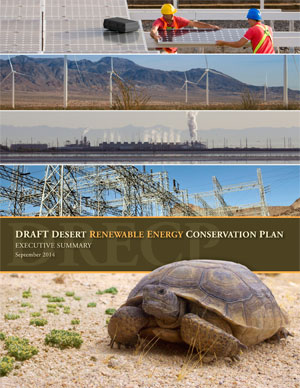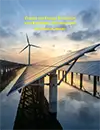Gov. Jay Inslee today signed an executive order outlining a series of steps to cut carbon pollution in Washington and advance development and use of clean energy technologies.
“This is the right time to act, the right place to act and we are the right people to act,” Inslee said in remarks delivered at Shoreline Community College’s Professional Automotive Training Center.
“We will engage the right people, consider the right options, ask the right questions and come to the right answers — answers that work for Washington.”
Inslee’s executive order builds on earlier studies and work groups to create an action plan in six key areas. It does not implement any new programs, instead setting out a deliberative and public process. Most of the major action plan elements listed below will require either legislative approval or legislative appropriation for funding.
The Legislature in 2008 adopted a timeline for reducing greenhouse gas emissions, calling for the state to meet certain emission limits in 2020, 2035 and 2050. Yet the consultant hired by Inslee’s Climate Legislative and Executive Workgroup reported that the state “will not meet its statutory reductions for 2020, 2035 and 2050 with current state and federal policies.” The consultant noted that “near-term action” is needed to meet the 2020 limits and “decisive actions taken today can set Washington squarely on a long-term path” to achieve the 2035 and 2050 limits.
When the workgroup asked for public input, hundreds of citizens attended public hearings in Spokane and Seattle and thousands more submitted written comments. The vast majority called on the state to act to reduce carbon pollution.
“The workgroup listened,” Inslee said. “This year, we will lead.”
Legislators who helped lead the CLEW process hailed today’s action.
“Washington has the opportunity to lead the nation in developing a smart, effective climate policy that grows our economy, shrinks our pollution and saves households, families and businesses money,” said Rep. Joe Fitzgibbon, D-Seattle, who served on the panel. “We must keep in mind the fact that the longer we wait to reduce our emissions, the more expensive it will be to do so.”
Sen. Kevin Ranker, D-Orcas Island, called the executive order a “bold action to advance Washington’s commitment to fighting climate change. These actions will not only develop specific Washington-based programs to significantly reduce greenhouse gas emissions, but will allow our children and grandchildren to experience a healthy Washington state — both environmentally and economically.”
The action plan elements call for these steps:
Reduce carbon emissions through new cap-and-market program
A Carbon Emissions Reduction Taskforce composed of 21 leaders from business, labor, health and public interest organizations will provide recommendations to the governor on design and implementation of a market-based carbon pollution program.
Inslee directed the taskforce to consider measures to offset costs to consumers and businesses and to design strategies to help energy-intensive industries transition from carbon-based energy sources.
Rod Brown of the Cascadia Law Group and Ada Healey of Vulcan will co-chair the taskforce. The group will hold its first meeting today. Final recommendations are due Nov. 21, 2014.
“In Washington and across the nation, we’ve already begun to see the harm caused by climate change,” said Brown, a member of the Cascadia Law Group. “By acting now, we can protect Washingtonians while at the same time offering all of us the economic opportunities we see emerging in the clean energy economy.”
“We are proud to be one of the leading developers of green buildings in the Pacific Northwest,” said Jody Allen, president and CEO of Vulcan Inc. “My hope in having Ada Healey participate on this task force is that we can find ways to expand and replicate what we’ve learned all over Washington.”
End use of electricity generated by coal
Several state agencies will work with key utilities to reduce, and eventually eliminate, the use of electrical power produced by coal. Coal-generated electricity accounts for most of Washington’s electricity-related carbon emissions.
Develop clean transportation options and cleaner fuels
Cars, trucks and other transportation-related sources accounted for 44 percent of the state’s total greenhouse gas emissions in 2010, with 23 percent coming from gasoline consumption. This means vehicle emissions must be reduced to achieve significant reductions in overall carbon emissions.
The state Department of Transportation will lead other agencies and local governments to promote strategies, policies and investments that support electrification of our transportation system and lower emissions through greater use of transit and other transportation options.
In addition, the Office of Financial Management will lead a technical feasibility study and cost-benefit analysis of clean fuel standard options. Analyses will help determine whether a clean fuel standard would work in Washington and how such a standard should be implemented.
Accelerate development and deployment of clean energy technology
The Department of Commerce will work with Washington State University and others on creating a program to develop and deploy new technologies for renewable energy and energy efficiency as well as recommend proposals for funding.
Inslee also asked the Washington State University Energy Program to work with the Department of Commerce, the Washington Utilities and Transportation Commission and others to craft recommendations for advancing development and deployment of solar power.
Improve the energy efficiency of the places we work and live
One of the most cost-effective strategies for reducing carbon emissions is to use energy more efficiently. The Department of Commerce will work with WSU and others to develop a smart building program to help homeowners, developers, businesses and governments significantly boost the energy performance of public and private buildings.
Reduce state government’s carbon footprint
The Department of Enterprise Services will lead efforts to reduce carbon emissions and improve energy efficiency throughout state government. “Resource stewardship” in state government is also one of the goals outlined in Inslee’s Results Washington, a performance management initiative.
A policy brief on the Governor’s executive order is posted on our website here.


